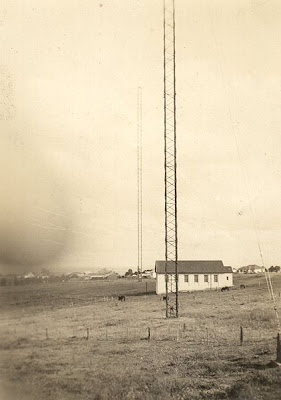 The sensational appearance of 4ZB Dunedin, New Zealand on 1044 kHz on the 25th and 26th June 1986 via the FRG7 and a modest 30 metre longwire antenna at Sandbaai, South Africa, was a remarkable and rare occurrence.
The sensational appearance of 4ZB Dunedin, New Zealand on 1044 kHz on the 25th and 26th June 1986 via the FRG7 and a modest 30 metre longwire antenna at Sandbaai, South Africa, was a remarkable and rare occurrence.
To the best of my knowledge New Zealand has not been logged on the mediumwave band in South Africa since.


 The 4ZB envelope with the enclosed QSL card was received in response to my reception report and was a cause for great celebration!
The 4ZB envelope with the enclosed QSL card was received in response to my reception report and was a cause for great celebration!
Audio Clip
The recording was made at 1724 UTC on the 25th June 1986 and included a "time check" announced as "five and a half away from the 5:30 news" as well as a promo for "Replay Radio".
Polar Absorption
The proximity of the signal path to the South Pole would help explain the rare appearance of a New Zealand mediumwave station in South Africa.

Google Earth Image showing the 10 646 km great circle path between Dunedin, New Zealand and Sandbaai, South Africa.
Polar absorption seems to reduce the ability of signals from the more southerly latitudes to reach here. It would appear that quiet ionospheric conditions with very low A/K indices are essential in order to receive dx signals from the south east part of Australia and New Zealand.
My guess is that the zero sunspot count with the quiet geomagnetic field on the 25th and 26th June 1986 would have contributed greatly to the reception of 4ZB.

Google Earth Image showing the ZB 1044 kHz 122 metre antenna mast at Highcliff to the east above Dunedin (Click onto the image for a high resolution).

 The checkered Bunbury lighthouse was built in 1959. The original lighthouse was subsequently attached to the top of the 10 metre base extension which was constructed in 1971 (Photograph Wikimedia Commons).
The checkered Bunbury lighthouse was built in 1959. The original lighthouse was subsequently attached to the top of the 10 metre base extension which was constructed in 1971 (Photograph Wikimedia Commons). 












































